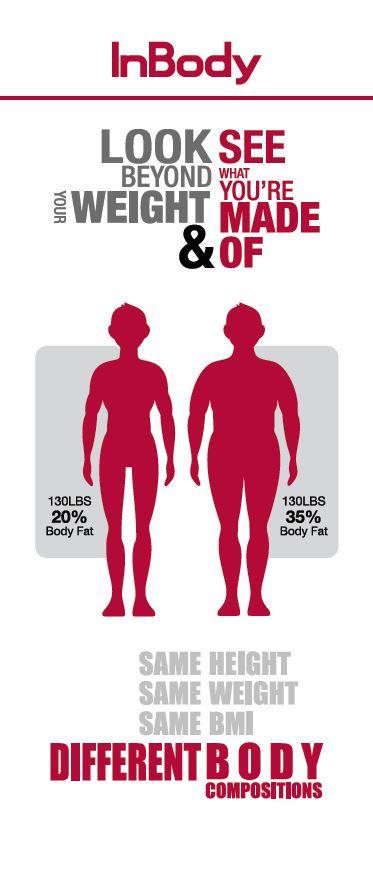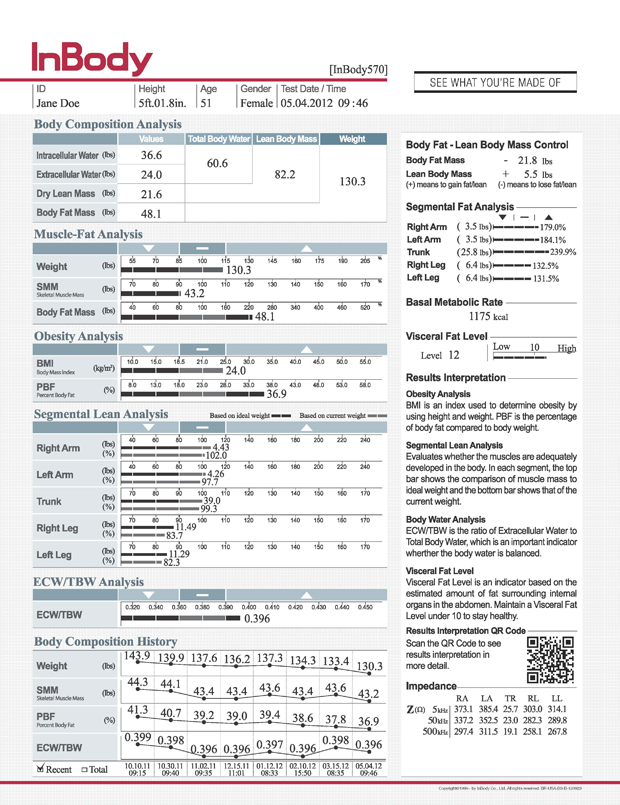Your InBody Report
Our goal is to bring the most tangible, efficient and serviceable technology to our program clients in a quick period of time without tapping into their busy day-to-day schedules.
The InBody 570 provides information regarding the five main categories below (and more):
- BODY FAT: measures body fat in pounds, measures visceral fat (aka fat around the organs), measures body fat percentage, provides fat amounts in the arms/legs/trunk.
- MUSCLE MASS: measures total muscle mass in pounds, provides full muscularity analysis of the arms/legs/trunk to determine imbalances and strengths. We will discuss the specific amounts in your Lean Body Mass and Muscle Mass.
- INTERNAL INFLAMMATION: measures extracellular water to total body water to derive inflammation caused by possible food allergies, sugar imbalances, and fat imbalances.
- VISCERAL FAT LEVEL: Visceral fat is a special kind of belly fat that is hidden deep inside your abdomen and surrounds your inner organs. Unlike-surface level (subcutaneous) fat, it’s not easy to gauge how much visceral fat someone has just by looking at them. Everyone has some visceral fat, but too much of it can increase the risk of serious health issues. Unlike the life-sustaining organs that you were born with, visceral fat actively works from the inside out to sabotage those organs and disrupt your bodily functions.
- Basal Metabolic Rate -Basal Metabolic Rate is often used interchangeably with Resting Metabolic Rate or RMR, but it has one key difference. While resting metabolic rate calculates the number of calories your body burns at rest, the basal metabolic rate covers the number of calories burned to maintain normal function.
As your Four Seasons Personal Success and Health Coach, knowing where a client is at within each of these areas is extremely important to understanding how your current health and wellness routines/habits/choices are going. These results allow us to provide a truly individualized approach thus giving us absolute confidence in your program design.
Learn about Body Composition from the InBody Website


